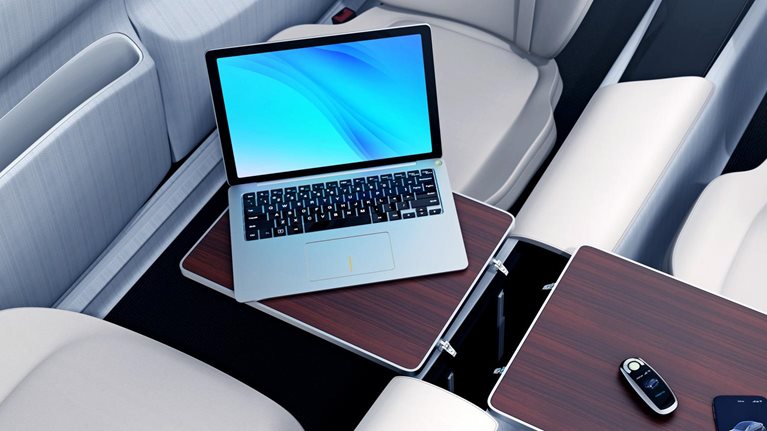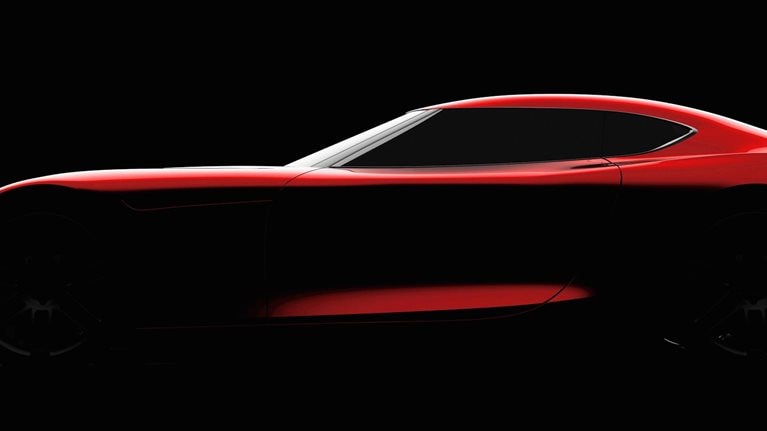Consumer demand for boats and recreational vehicles (RVs) was on the rise for years before the COVID-19 pandemic began—spurred by expanding interest from younger generations and by a broad-based boost in enthusiasm for outdoor activities. This growth surged to new heights in 2020 and 2021, as a flurry of pandemic-era buying from American customers seeking physically distanced escapes created a dramatic sales lift.
However, in 2022, and so far in 2023, a mix of inflation, rising interest rates, and sinking consumer confidence have slowed that surge. As a result, the boat and RV sector has become increasingly rife with uncertainty. Now that the pandemic wave has crested—and a potential secular downturn looms—what’s next for the industry? How can leading boat and RV players build resilience and find growth amid a challenging moment?
Inflation and interest rates are difficult to forecast, and consumer confidence is fickle. But one industry-shaping factor is here to stay: the overarching trend in the world of RVs and boats—sure to influence the US marketplace for years to come—is the ongoing age shift of the customer base. A generational transition is unfolding, powered by basic demographics as baby boomers age out of boat ownership and younger generations age in. The industry will need to react.
Younger consumers entering the market for RVs and boats are digitally savvy. They are focused on the experiential aspects behind the life cycle of buying, owning, or repurchasing a boat or RV. They care deeply about value yet are willing to pay a premium for sustainably made products. Understanding their mindsets, innovating with an eye toward their preferences, and ultimately winning their loyalties will help companies enable future growth.
Steady growth, a sudden spike—and then?
In the wake of the 2008 financial crisis, the US market for RVs and boats began a multiyear run of significant growth. From 2011 to 2018, revenue from boat sales experienced a compound annual growth rate of approximately 7 percent, while the growth rate for RV sales during the same time frame was 10 percent. This period correlated with low inflation, low interest rates, and rising US GDP and consumer confidence.
Then came the profound disruption of the COVID-19 pandemic. An enormous group of consumers was suddenly in search of physically distanced, outdoor activities. From 2019 through the height of pandemic, sales of recreational products surged by more than 30 percent. This surge initially held, even as inflation and interest rates rose. But ebbing consumer confidence eventually prevailed, curbing gains from the preceding period.
Increased pandemic-era exposure to the joys of boating and RVing has created ongoing affinity among a broader range of consumers. But those consumers’ concerns about affordability during an unsettled economic moment might continue to weigh on sales.
A demographic sea change
According to 2021 data from an RV industry trade group, about half of all RV buyers are younger than 55 years old, and more than one-fifth of RV owners are between 18 and 34 years old.1 When asked which categories they intend to splurge on in the next year, Gen Z and millennial consumers are nearly twice as likely as Gen X or boomer consumers to express an intent to purchase a boat or RV.2
Within a few years, the total addressable market for boats and RVs will be inclusive of Gen Z, millennials, Gen X, and baby boomers. Millennials are now the most populous consumer group in the United States (having surpassed boomers in 2019), and we anticipate that they will remain the most substantial consumer set for boats and RVs until roughly 2036, when Gen Z is expected to overtake them.
Younger consumers tend to have more confidence in America’s economic outlook, with 46 percent of Gen Z and 44 percent of millennials reporting that they are optimistic (versus only 30 percent of Gen X and 22 percent of boomers).3 Although millennials are entering the workforce at a lower average real income than their Gen X counterparts did (earning an average of $4,000 less in real wages at age 27), they are also experiencing life-stage milestones such as parenthood later—potentially leading to their having additional disposable income for a longer period of time. Meanwhile, McKinsey research suggests that about $18 trillion worth of assets will be transferred from baby boomers to succeeding generations by 2030.
Strategies for targeting younger consumers
In addition to showcasing products that offer good value, boat and RV players should consider emphasizing four other factors that could help sway younger demographics: customer experience improvements, product ease-of-use enhancements, sustainability advances, and service integration and business-building initiatives.
Digitizing the customer experience
Whereas previous generations of RV customers relied heavily on the expertise of floor salespeople to guide purchases, millennials will often shop online for the most value-rich combinations of features and pricing before arriving at a dealership. These consumers then frequently encounter dealership salespeople who lack the training and expertise to comfortably steer the buying process and authoritatively negotiate—which reinforces the digitally savvy customer’s choice to rely on digital channels (such as YouTube) for detailed product breakdowns. Similar dynamics shape the markets for financing and insurance services and for aftermarket services and parts.
Appealing to a younger customer base will require sharper digital marketing, robust online services, and the crafting of a more holistic purchasing journey. RV and boat dealers would do well to emulate leading automotive players that have mastered digital funneling of customers to dealerships and can establish personalized relationships with consumers through integrated online offerings. Some tech-forward retailers in the boat and RV realms are already emerging. Digitally adept dealers have begun to simplify the boat purchasing experience—for example, by allowing customers to use online channels to assess, compare, and select between a variety of boats, insurance services, and financial products.
Designing products that are beginner-friendly
Younger consumers today expect the products they purchase to be tech forward, self-explaining, and intuitive. For boats and RVs, this can in part mean linking mobile devices to vehicles (providing a more connected experience through dedicated apps) or to destinations (such as marinas or RV parks, to facilitate stays and services). But many of the most powerful and exciting new tech developments are in the field of automation.
Continued advancements in RV and boat usability, such as self-driving and auto-docking features, will expand the appeal of products to a broader range of buyers. Beginner-friendly tech lowers the barriers to entry for first-time users and buyers who harbor concerns about being able to operate a product without burdensome amounts of training.
We continue to track the ongoing potential for advancements related to autonomous driving for road vehicles, and a similar evolution is under way with boats. Innovations such as Raymarine DockSense, by infrared-camera company FLIR, and Volvo Penta’s Assisted Docking make use of cutting-edge developments in vision technology, video analytics, and computer intelligence to assist boat pilots with steering and maneuvering in tight areas. One-touch controls for complicated operations such as ballast deployment could reduce hassle for boat owners. And fully autonomous boats are on the horizon: the Massachusetts Institute of Technology’s electric, autonomous Roboat can maneuver and dock itself—automatically compensating for external factors such as wind and current.
Improving sustainability
Environmentally conscious younger consumers will no doubt spur demand for greener solutions. They will expect decarbonization of manufacturing processes (perhaps coupled with manufacturers’ purchases of carbon offsets) and reduced emissions during vehicle operation (with electric propulsion a key selling point). Regulation can be a catalyst in some cases, but pleasing consumers could prove to be the more powerful impetus. Forty percent of millennials are concerned about the environmental impact of their boats (compared with 28 percent of Gen Xers and 24 percent of boomers), and 60 percent of millennials would be interested in an alternatively fueled recreational boat (compared with 45 percent of Gen Xers and 33 percent of boomers).
Electric-RV designs, from top manufacturers, are already appearing. There is also significant potential for zero-emission boats, particularly as battery technology catches up with boating’s higher-load needs. Start-ups have begun to introduce all-electric, hydrofoiling watercraft that move silently through the water. Younger consumers might also appreciate the growing implementation of ancillary decarbonization efforts. Leading marine manufacturers have announced that they are buying clean solar power to offset the energy needs of their global operations. One boat maker recently began using cork instead of teak as a deck material, since cork is a more renewable material.
Expenditures intended to green the industry could be offset by consumers’ willingness to pay: 31 percent of Gen Z customers say that they are willing to pay more for sustainable products, and 90 percent believe that companies have a responsibility to address environmental issues.4
Service integration and business building
Product complexity and proliferation can create challenges that result in excessive waiting periods for purchasing or servicing boats and RVs. Vertical integration, paired with digital touchpoints along both the service and sales journeys, could help companies differentiate themselves from competitors.
Meanwhile, horizontal integration—through acquisitions or mergers with competitors—could increase companies’ capabilities and market share while also expanding their dealership footprints. More closely managing distribution and the retail environment, as well as exploring direct-to-consumer models, could offer greater control over both operations and margins. Entering adjacent market areas, either through acquisitions or new-business building, can diversify earnings and broaden the set of experiences presented to end consumers (for example, boat clubs owned and operated by boat manufacturers might derive revenue from hospitality).
In general, a more consolidated industry will provide economies of scale. This can create affordability for consumers while strengthening margins for manufacturers and retailers. Given that affordability is top of mind for younger buyers, consolidation could lead to more attractive value propositions.
It’s important to note that younger consumers are increasingly likely to rent, or to join a membership program, as an initial entry point into new categories or experiences. Forty percent of millennials are interested in joining a boat club as a potential alternative to owning a boat (compared with 30 percent of Gen Xers and 24 percent of boomers).5 This has spawned a number of new rental offerings from boat and RV players, in an attempt to capture the growing interest of this group and to establish and nurture a relationship with customers.
Growth aspirations should not be abandoned during times of economic uncertainty. Companies can build resilience, survive a potential downturn, and thrive when the next cycle comes around. Despite ebbs and flows in market momentum, it is clear that a strong base of demand for boats and recreational vehicles remains—spurred increasingly by younger generations.
Younger consumers think differently compared with older demographics about factors such as the purchasing experience, digitization and technology, and sustainability. Boat and RV players could benefit from getting out in front of these shifting consumer needs and preferences. To be successful, companies can consider how to modernize their businesses across several dimensions, including product innovation, digitization, capacity to expand into new market segments, and a revamping of the omnichannel sales experience. The industry is strongly positioned to make these changes and reap the benefits that will result.


